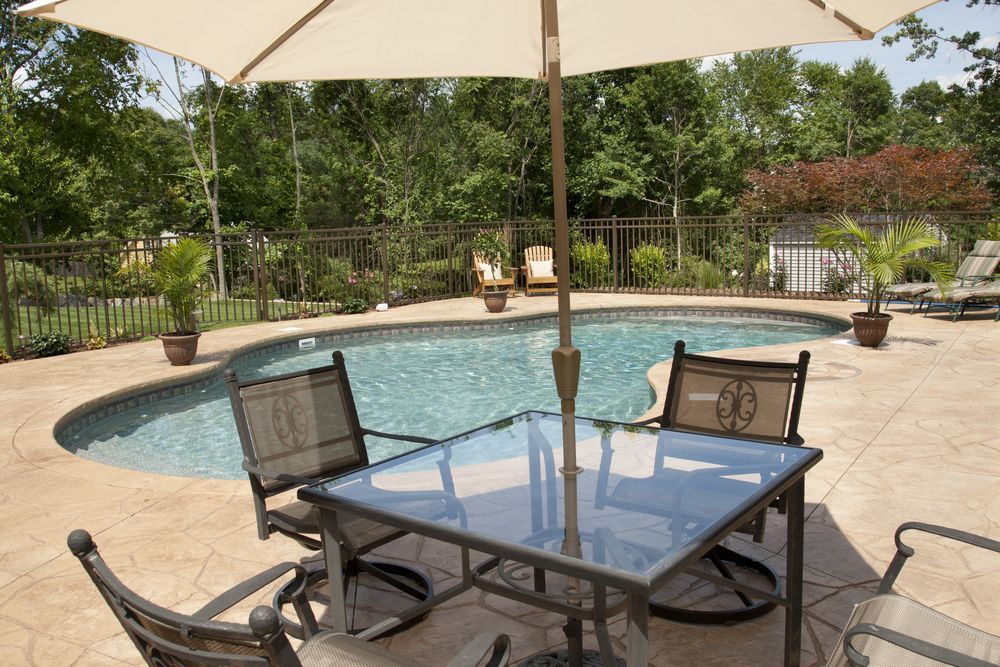Top 5 Causes of Stained Pool Tiles and How to Prevent Them
Maintaining a pool is about more than just sparkling water. The pool tile surrounding and lining your pool plays an important role in its overall appearance. When tiles start to darken or show discoloration, the entire pool can look neglected, even if the water is clean. Pool tile staining is a common problem that homeowners in Columbia, SC face due to local water conditions, frequent usage, and natural outdoor exposure. Understanding the root causes of these stains is the first step toward effective stains cleaning and prevention.
In this article, we will explore the top five causes of stained pool tiles, explain why they happen, and share proactive strategies for keeping your pool tile in pristine condition.
Cause 1: Hard Water and Mineral Buildup
One of the most frequent culprits behind pool tile staining is hard water. When water contains a high concentration of calcium, magnesium, and other minerals, it leaves behind deposits that gradually collect on pool surfaces. Over time, these mineral deposits harden into a chalky white crust or a rough scale that is particularly noticeable on the waterline tiles.
In Columbia, SC, many households deal with moderately hard water, which accelerates this process. Not only does it create unsightly discoloration, but scale buildup can also damage the smooth finish of pool tile, making future stains even harder to remove.
To prevent hard water stains, regular stains cleaning is crucial. Professional descaling services and specialized cleaning solutions can dissolve calcium buildup without harming the tile surface. Installing a water softening system or using pool chemicals that stabilize calcium levels also helps minimize mineral deposits before they can settle.
Cause 2: Algae Growth and Organic Stains
Another leading cause of pool tile staining is algae. These microscopic organisms thrive in warm, moist environments, which makes a swimming pool an ideal habitat. If pool chemistry is unbalanced or cleaning is inconsistent, algae can quickly spread, leaving behind dark green, black, or even mustard-yellow stains on pool tile.
Organic matter like leaves, pollen, or dirt that falls into the water can worsen this problem. As debris decomposes, it releases tannins and other pigments that embed into the porous surface of pool tile, creating stubborn stains that regular brushing cannot remove.
To prevent algae-based staining, pool owners should maintain proper chlorine levels, use algaecides, and ensure their filtration system is working efficiently. Consistent vacuuming, brushing, and skimming also limit the amount of organic material that settles on the pool floor or tile surfaces. In Columbia, SC’s humid summers, these measures are especially important to stop algae from flourishing.
Cause 3: Metal Contamination from Water Sources
Metals like copper, iron, and manganese can seep into pool water from various sources. These metals may come from corroding pool equipment, plumbing systems, or even the municipal water supply. Once in the pool, they oxidize and attach to pool tile, leaving behind brown, green, or rusty orange stains that are notoriously difficult to clean.
Iron often leaves reddish-brown marks, copper can cause greenish or bluish stains, and manganese produces deep black or purple discoloration. Metal-based pool tile staining is not only unattractive but can also give the impression of dirty or contaminated water.
Prevention requires both water testing and proactive treatment. Sequestering agents, which bind to metal particles and keep them dissolved in the water, can help stop stains before they settle. Additionally, regular inspection of pool equipment and plumbing in Columbia, SC ensures that corroded parts are replaced before they contribute to metal contamination.
For stains cleaning, professionals often use specialized chemical treatments that safely lift metal stains without damaging tile finishes.
Cause 4: Improper Pool Chemistry
Even when no visible debris is present, an imbalance in pool water chemistry can lead to staining. High pH, low chlorine levels, or poor alkalinity control allow bacteria, algae, and minerals to react with the pool surface, leaving behind marks. Over time, improper chemistry accelerates corrosion of ladders, heaters, and fixtures, which further contributes to staining.
For example, if pH levels remain too high, calcium carbonate deposits will quickly form, leading to white scale. Conversely, low pH levels can corrode metal fixtures, resulting in rust stains on nearby pool tile. Inconsistent chlorine levels also allow microorganisms to thrive, causing discoloration along grout lines and waterline tiles.
The best way to prevent chemical-related stains is to routinely test water balance. Pool owners in Columbia, SC should make a habit of checking chlorine, pH, alkalinity, and calcium hardness at least once a week, especially during peak swimming months. Automatic chemical feeders or pool service companies can help maintain balance and reduce the likelihood of unexpected staining.
Cause 5: Environmental Factors and Outdoor Exposure
The environment surrounding a pool also plays a major role in tile staining. Pollen, dirt, rainwater runoff, and even nearby landscaping materials can contribute to discoloration. In Columbia, SC, the combination of seasonal pollen, summer storms, and frequent outdoor activity creates many opportunities for stains to develop.
When wind blows dust or soil into the pool, tiny particles can embed into grout and porous tile surfaces. If trees or bushes are planted close to the pool, sap and organic debris can stick to tiles and leave behind yellow or brown marks. Even sunscreen, oils, and cosmetics used by swimmers can cling to pool tile and harden into visible stains.
While stains cleaning can address surface discoloration, prevention involves regular maintenance. Power washing nearby patios, trimming landscaping, and rinsing off before swimming all help minimize environmental contamination. Pool covers are also highly effective at protecting tile surfaces when the pool is not in use.
Conclusion
Pool tile staining is a frustrating problem, but it is far from inevitable. By understanding the main causes of discoloration, homeowners can take proactive steps to protect their pool investment. Hard water buildup, algae, metal contamination, chemical imbalance, and environmental exposure are the top reasons tiles lose their shine.
Consistent maintenance, including routine stains cleaning, chemical testing, and preventive care, ensures that your pool tile remains attractive year-round. In Columbia, SC, where water hardness and climate conditions contribute to faster staining, extra diligence pays off. A clean, sparkling pool not only looks beautiful but also adds lasting value to your home and provides a healthier swimming environment for your family.
By staying informed and adopting proper care habits, you can enjoy your pool without the distraction of unsightly tile stains. Prevention is always easier than correction, and with the right approach, your pool tile will maintain its brilliance for years to come.
Need Comprehensive Pool Services Near You?
At Oasis Pool Warranty and Service, we know how frustrating stained or discolored pool tile can be—and we’re here to help you keep your pool looking its absolute best. Our expert team specializes in thorough cleaning, routine maintenance, and long-term protection so you can enjoy a sparkling, worry-free pool year-round. Serving the South Carolina Midlands and Columbia Metro Area, we’re committed to protecting your investment and making pool ownership simple, stress-free, and enjoyable. Contact us today to schedule your service and let us bring back the shine to your pool.












